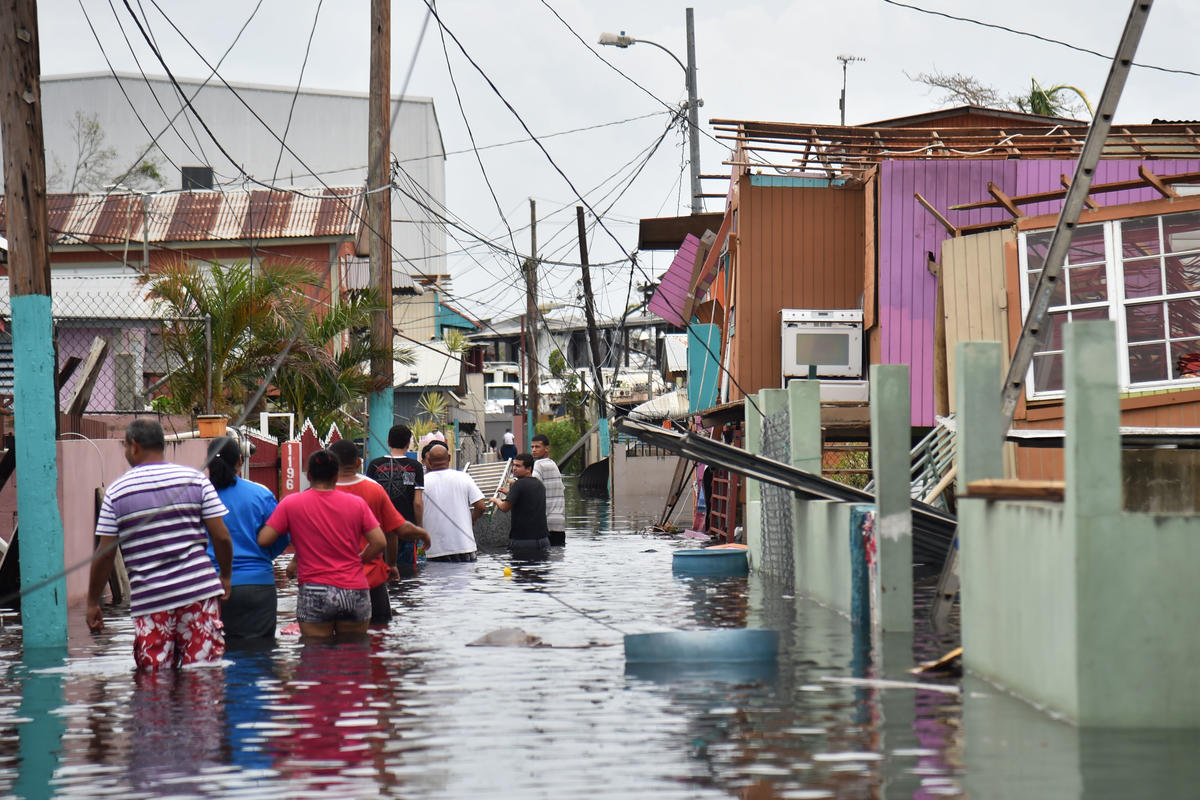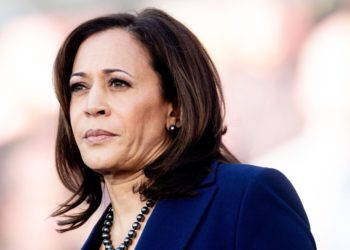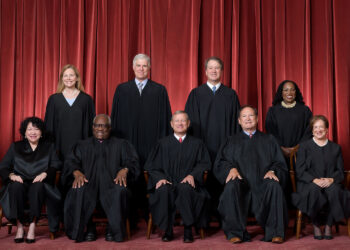In the fall of 2017, Puerto Rico was devastated by Hurricane Maria. The storm wreaked havoc on the island’s infrastructure and electrical grid, damaged or destroyed hundreds of thousands of homes, and ultimately left nearly 3,000 people dead.
More than a year and a half later, Puerto Rico is yet to make a full recovery. Debris remains scattered across some parts of the island. The electrical grid is still fragile, and many families continue to rely on make-shift roofs patched with blue tarps to keep them safe from the elements. The only hospital on the island of Vieques remains shuttered, forcing local patients to make long journeys to the mainland for treatment.
As the people of Puerto Rico continue to suffer, a partisan standoff is underway in Washington over how much more funding will be allocated towards Puerto Rico’s disaster relief efforts. President Donald Trump this week erroneously claimed that the U.S. territory has received $91 billion in aid, more “than any state in U.S. history.” Following his lead, Republicans in Congress are pushing to exclude further funding for Puerto Rico in a larger disaster relief bill that seeks to provide aid to other locations affected by disasters, including fire-ravaged Northern California and the hurricane-hit Florida Panhandle.
To discuss all of this and more, The Globe Post spoke with Dr. Irwin Redlener, one of the nation’s leading experts on disaster relief and preparedness. Dr. Redlener is the founder and director of the National Center for Disaster Preparedness at Columbia University, where he is also a clinical professor of Health Policy and Pediatrics.
Q. Over a year and a half after Hurricane Maria devastated Puerto Rico the island is still yet to make a full recovery. I saw that you met recently with the governor of Puerto Rico, Ricardo Rossello. Based on your conversations with him and from your other knowledge of the situation down there, what are the biggest Maria-related challenges that the island still faces?
Redlener: Well Maria, as everyone is aware, really devastated Puerto Rico and the humanitarian aid needed immediately was massive. And that occurred in ways that were not fully satisfying in that there was a lack of coordination with federal agencies in the states. And what happened was that everything took much longer – from medical response to fixing an electrical grid and so on. So now we are quite a bit distant time wise from the actual event and Puerto Rico’s in recovery. But the recovery is going very very slowly and it’s very complicated.
Just a week and a half ago, I met with the governor and with several state officials, including the person who’s been designated as the overseer of all recovery efforts, General [Jose] Reyes. Then I had an opportunity to go up into the central part of Puerto Rico and look at some programs there. But you still drive to the mountains and there’s many, many homes that still have the blue tarp coverings that have not been repaired yet. The electrical grid is up and running again, but in spite of promises by the U.S. Army Corps of Engineers, they rebuilt the same old rickety, fragile electrical system they had before. The Corps of Engineers said they were going to rebuild it and do underground cables and microgrids and establish solar power sources and so on, but that did not materialize.
So my sense is the electrical grid is as fragile as it was before. We just have children getting back to school. We still have debris in certain parts of the island that has never been picked up in all these months later. The governor for his part has actually been very focused on this and is working a lot with these agencies. But they need the money that they were supposed to be getting – well over and over $90 billion – and I think only a very small fraction of that has so far materialized.
“The actual funding … has been grossly, shockingly inadequate.”
Q. I understand that long term recovery efforts from major disasters can take a lot of time. But in your experience, how unusual is it for a locality, particularly an American territory, to still face so many challenges this long after a disaster?
Redlener: It’s unconscionable that the money is so slow to come to fruition in going to the relevant committees and offices in the White House – the various Cabinet agencies. Meanwhile, at the end of the day, a few billion went to Puerto Rico when actually the government of Puerto Rico many months ago said that this recovery is going to cost over $100 billion. And it’s not happening. I think there’s been some pretty distinct differentiation made in terms of how rapidly recovery is happening in terms of what’s gone to Puerto Rico and what’s happening here stateside. By the way, even what’s happening here, we still have very significant problems in recovering from Hurricane Michael in the panhandle of Florida. We have this recovery going on obviously after the Camp Fire in California.
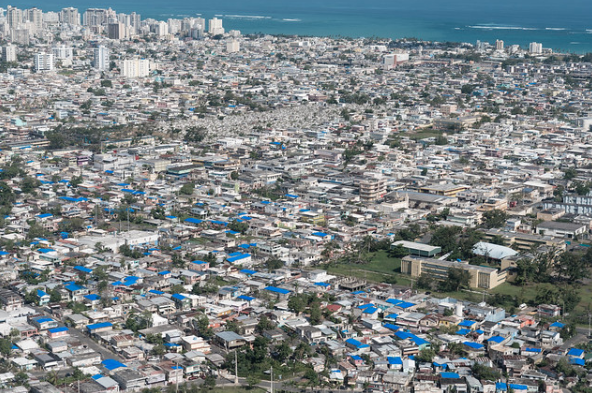
So I’m being very focused on Puerto Rico and basically saying it’s just unconscionable how long it’s taken. But in general, recovery is not something that we do well. I can’t even think of an example where a recovery took place at a pace that would be appropriate for the families that were affected. Of all the things that have to do with dealing with disasters from prevention to mitigation through response and then recovery, recovery is the least effective in the strategies that we’ve been using. There’s lots of bureaucratic problems. And once the cameras and the journalists leave an area where there’s a lot of drama, then the attention of the public and the media drops. And that in some ways lets policymakers, legislators, appropriators off the hook a bit because they get the sense that nobody’s really watching them. So things like making sure Puerto Rico or the panhandle of Florida have the money they need is a lot more challenging, which is the case now.
Q. In Washington right now, there’s a standoff between lawmakers over how much additional funds will ultimately be allocated to Puerto Rico. The president has repeatedly said that the island has been given $91 billion in aid since Maria. But FEMA records show that it’s only received about $11 billion of the $41 billion that have been approved by the federal government thus far. So what exactly is holding up the disbursement of the rest of that $41 billion? And do you believe that the funding generally has been adequate so far just at least in the appropriations?
Redlener: The actual funding – by that I mean money actually delivered to Puerto Rico – has been grossly, shockingly inadequate. The fact that the president said $91 billion has already gone there is a preposterous misstatement of reality. I guess we should not be shocked, but it is what it is. Meantime people are suffering there. It’s a U.S. territory, those people are American citizens. But there’s been evidence of certain discrimination or prejudice relative to Puerto Rico from the very beginning.
FEMA and some of the health agencies on the ground were doing a yeoman’s job and did very well. But the leadership from the top and the disdain that the White House showed for Puerto Rico from the very beginning was really, really unfortunate. I think people remember that image of the president throwing rolls of paper towels into crowds of people in Puerto Rico – making a mockery of the suffering that is going on there – was something that’s sort of hard to forget. But anyway, the fact that the president fabricated the $91 billion dollar number, I can’t explain it, but the fact is it’s just not true. And the reality is that Puerto Rico needs the money it’s been promised.
“There’s been evidence of certain discrimination or prejudice relative to Puerto Rico from the very beginning.”
Q. Trump also claims that Puerto Rico has received “more funds than any state in the history of the U.S.” for disaster relief and has suggested that the problem really is that Puerto Rico somehow has misused or mismanaged those funds. What’s your reaction to that part of the president’s statement?
Redlener: Is your show for mature audiences? If you really want to know what I think – no seriously, I think it’s almost inexplicable. Although maybe in a Trump White House it’s par for the course. But it’s hard to know what to say here. First of all, that so-called fact is not accurate. It’s not factually accurate that more has been spent in Puerto Rico. Putting that aside, the reality is Puerto Rico needs the funding to recover. And like I said, there’s still people east of Houston, Texas that were affected by really severe flooding and still are not recovered. Places in southwest Texas also are still not recovered.
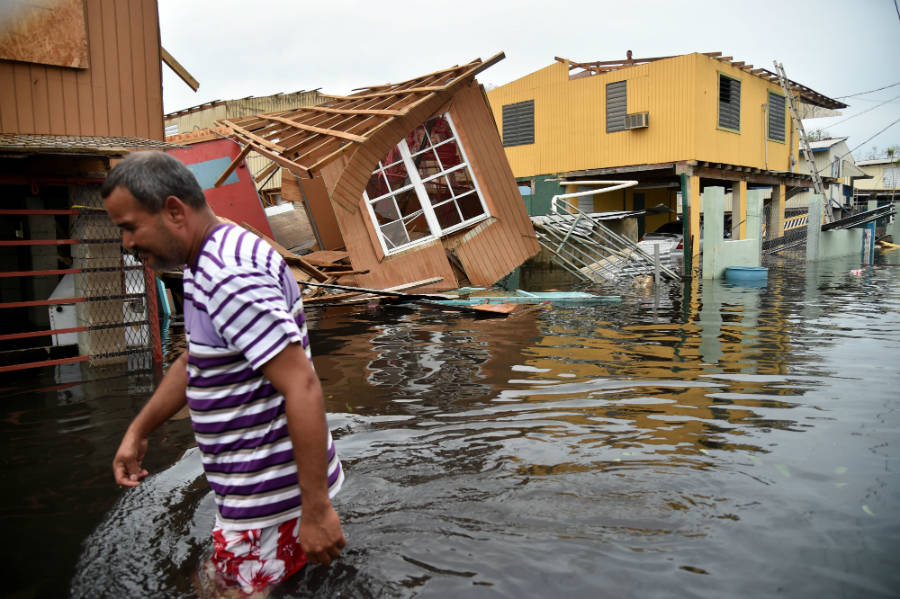
Recovery, as I was saying earlier, is something that seems to be extremely problematic for the U.S. and other countries around the world but in the U.S. in particular. Interest wanes and then you have a slowdown of the funding streams and lots of problems coordinating the recovery dollars. Even Superstorm Sandy which happened in 2012 in New York and the Northeast – Congress appropriated $49 billion dollars for recovery but that money was distributed to 18 different federal agencies, some more than others, but 18 different agencies got that on the federal leve. Then that had to seep down to the relevant and similar agencies on a state level and on a local level.
It turns out to be a real bureaucratic jumble and it’s difficult to sort out that. So recovery from Superstorm Sandy also took a long time as it is taking in Florida Panhandle, in the Carolinas, up to Florence after Harvey. So in some ways, it’s nothing new and it’s not the slow recovery. The reality is it’s not all attributable to the Trump administration. It’s just that his statements or misstatements or how he characterizes Puerto Rico is really out of line and has influenced the speed to which the government is responding with aid packages.
Q. So you don’t believe that Puerto Rico or Puerto Rican officials have misused or generally mismanaged any funds that they’ve received so far?
Redlener: I don’t know. I mean there’s no evidence. I don’t know how I would know from my perch but. But all I could say is the governor was extremely focused and he had the right officials there. We’ve gotten follow up from them and so I don’t know. They’re using private consultants to help sort through a lot of this. But there’s always talk about corruption in Puerto Rico. I didn’t see a shred of evidence. But again Bryan, there’s no way that I would be able to document any kind of corruption. I’m just assuming it’s not and I’m just taking a read of the Governor.
“We’re taking people now that are otherwise highly vulnerable, very much traumatized, and we’re expecting them to manage all these things and it’s impossible for people.”
Q. I’d also like to ask you a bit about the work that you’ve been doing with the Children’s Health Fund and the National Center for Disaster Preparedness in Puerto Rico. What has been the focus of that work? And what are you hoping those organizations can do to help going forward?
Redlener: Days after the storm hit, I got a call from Marc Anthony the singer who I’ve known for 20 years and he said he was going to do a concert to raise money to do humanitarian relief in Puerto Rico and asked if I would help him figure out who should get the money and get it distributed responsibly. And I said “of course, yes.” So my center has been working with Somos Una Voz, which is the organization that Marc put together. And we’ve distributed money to two dozen or so programs that have been highly vetted and those programs are really full steam ahead. Some of these programs were for initial humanitarian relief – food and water and generators. Then over time, we’re giving more money for long term recovery and providing a more stable infrastructure especially around things that help children.
Then my center also has, via a grant from the company GSK, a grant separate from Somos Una Voz activities. This grant from GSK has us working on the stability and resilience of what’s called child serving institutions – schools, healthcare, social services for children to become functional again as soon as possible after the disaster. This really important issue because getting children back to normal is one of the key goals. Normal life and routine are one of the key goals of the path to recovery.

Then I’ve been involved in a number of committees. I’ve been four or five times to Puerto Rico including the first time 10 days after the disaster. The Children’s Health Fund is also involved because there are two legacy programs that Somos is supporting. We donated a mobile pediatric clinic similar to the ones we have in the States. There’s actually two there and now one is being used as a fixed site clinic at a school that will increase the school’s ability to provide health services. The other one which they just got a couple of weeks ago from Somos is a beautiful, state-of-the-art pediatric clinic on wheels that’s going to be making the rounds among schools that are served by a larger health center.
That’s considered a legacy project. It’s going to help in the recovery but it’s also going to be there permanently. And the second permanent legacy program is actually a partnership with some and the Boys and Girls Clubs of Puerto Rico. That project is creating an enhanced agenda and curriculum for a new school in San Juan that’s going to be serving very indigent children have been affected by the by Hurricane Maria. So we have a big presence. One of the reasons I was in Puerto Rico meeting with the governor was to review with him what we have been providing to Puerto Rico and secondly, to make myself available to help them with any of the recovery planning that they are contemplating.
Q. This is something that we got into in length in our last interview, but for people who didn’t see that one, when you see that we don’t do recovery well, what are some of the major things that you think need to change on a structural level in terms of the way the federal government responds to these incidents?
Redlener: Good question. I want to mention a couple of things. I don’t know if it’s possible, but ideally, this appropriations process needs to be hastened. Secondly, the challenge of trying to deal with multiple agencies is a major barrier and that should be centralized. Once the money is appropriated there needs to be some kind of czar overseeing the whole thing who can get through the bureaucratic barriers to allow the money to flow properly. Thirdly, there needs to be a lot more accountability to what is happening around recovery and when it is happening. Fourthly, we need to make sure that the issues affecting children are dealt with very efficiently and effectively so that kids can get back to normal. One of the major outcomes of a poorly managed recovery is that the persistent traumatization of children who are not back to normal.
And fifth and finally, right now if a family has been badly affected by a disaster – say their house has been destroyed and the kids are not in school and there’s all kinds of traumatization for everybody in the family from this event – the people at the agencies and people that the disaster victim needs to deal with are many. They need to deal with benefits that may come from FEMA, state agencies, local agencies, not for profit institutions, even the banks. What happens to the mortgage payments if the breadwinner is not working? That doesn’t mean they’re not responsible for the mortgage.
So the people who are victims often become their own case managers. And I think we should have in place a system where every single person or family that has been affected by a disaster gets something like a disaster case manager. You go in – one stop – where you can get access to psychological counseling and economic planning, dealing with your mortgage, and getting your life back together. So we’re taking people now that are otherwise highly vulnerable, very much traumatized, and we’re expecting them to manage all these things and it’s impossible for people.
More on the Subject
Irwin Redlener: US Remains Ill-prepared for Terror Attacks, Natural Disasters [Part I]


